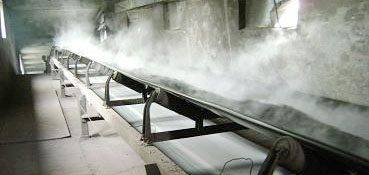When purchasing heat-resistant conveyor belts, there are several important considerations to keep in mind. Here are some key factors to consider:

Temperature range:
The temperature range(-30C to 180C) is one of the most important factors to consider when selecting heat-resistant conveyor belts. Different heat resistant conveyor belt materials have varying temperature ranges, and it’s essential to choose a belt that can withstand the temperature range of your application.
Material properties
Different materials have different properties that make them suitable for different applications. When choosing a heat-resistant belt, consider the material properties such as abrasion resistance, heat resistance, and elasticity to ensure that the belt can handle the specific conditions of your application.
Conveyor speed
Conveyor speed is another important factor to consider when selecting a heat-resistant belt. Faster conveyor speeds can generate more heat, so it’s essential to choose a belt that can handle the heat generated by the speed of your conveyor system.
Load capacity
The load capacity of the conveyor system is another important consideration. Different conveyor belts have different load capacities, so it’s important to choose a belt that can handle the weight of your product without breaking or stretching.
Application environment
The environment in which the conveyor system will operate is another crucial consideration. Different conveyor belt materials have varying resistance to environmental factors such as moisture, chemicals, and abrasion. It’s important to choose a belt that can withstand the environmental conditions of your application to ensure a long service life.
Belt thickness
The top/bottom cover thickness of the rubber belt can affect its ability to handle high temperatures. Thicker belts can handle higher temperatures, but they may not be as flexible as thinner belts. It’s essential to consider the thickness of the belt and how it may affect the performance of your conveyor system.
Maintenance requirements:
Maintenance requirements can vary depending on the type of conveyor belt. Some belts may require more frequent cleaning or lubrication, while others may require less maintenance. It’s essential to consider the maintenance requirements of the belt and ensure that your facility can meet those requirements.
Certification
Look for a conveyor belt that meets relevant certifications such as ISO 9001 and ISO 14001. These certifications ensure that the conveyor belt has been manufactured to meet industry standards for quality and environmental management.
In conclusion, when purchasing heat-resistant conveyor belts, it’s essential to consider the temperature range, material properties, conveyor speed, load capacity, application environment, belt thickness, maintenance requirements, and certification.
By considering these factors, you can choose a belt that fulfills your specific requirements and guarantees a dependable and durable conveyor system.

